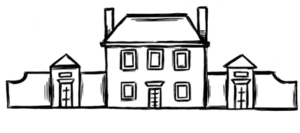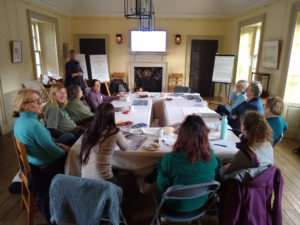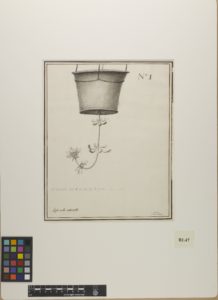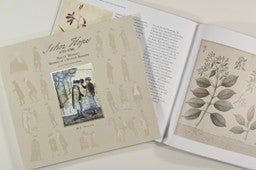
A Cottage Volunteer
My Introduction to the Botanic Cottage
The Royal Botanic Garden Edinburgh has always had a special place in my heart, especially since my son proposed to his girlfriend in the Rock Garden and was graciously accepted. It continues to be a regular family destination for walks, plant and cultural discoveries and meeting friends, usually rounded off with a good cup of tea and a fruit scone in one of the cafes.
Following some years of retirement, (my motto being ‘embrace change’), I decided that I was ready for my next challenge and so, at the start of 2020, I became a volunteer at the Botanic Cottage. With an open mind and an eagerness to provide a helping hand wherever possible, I looked forward to making new friends, improving my basic knowledge and experience of gardening, and extending my own lifelong learning.
I thoroughly enjoyed my introduction to, and tour of the building, one steeped in history. Staffed by such enthusiastic and dedicated people, it provides a wonderful setting for a wide range of community and learning activities – details of which can be found on the RBGE website – rbge.org.uk and @Botanic Cottage Twitter account.

At first it was thought that I’d join the team of Cottage volunteers who support the many groups, organisations and societies that use the well-equipped spaces. However, while helping to tidy out a cupboard in the ‘Potting Shed’, I came across a large box of high-quality prints of hand-drawn plant specimens, experiment diagrams and other botanical observations.

1780 John Lindsey Experiment no I
‘Competing effects of light and gravity’.
Courtesy of RBGE Library.
RBGE web site link: RBGE archives
On enquiring further, the Cottage Co-ordinator explained that the prints were of original illustrations held in the John Hope Collection in the RBGE Library. Professor John Hope (1725-86), RBGE Regius Keeper during the Scottish Enlightenment, was one of the most important figures in the botanical history of Scotland and the RBGE. A large proportion of his letters, papers, lectures, drawings and notes on plant experiments are housed in the RBGE Archives and in the National Records of Scotland in Edinburgh. This particular collection of prints was created as part of a Wellcome Trust, People Award project as part of the new Botanic Cottage interpretation tool set for the ‘500 Years of Plants, People and Medicine in Edinburgh’ project. Many academics, horticulturalists, students and interested enthusiasts have researched these historical records feeding into published books, articles and papers on this remarkable 18th century man.Some of the images were featured in Henry Noltie’s revised edition of John Hope (1725-1786): Alan G Morton’s Memoir of a Scottish Botanist, published by RBGE in 2011

‘John Hope (1725-1786), Memoir of a Scottish Botanist’2011
Available from the RBGE on-line shop via this link: RBGE On-line Shop
The aim of my volunteer project is to make these resources accessible and available for use in displays as well as in outreach, education and exhibition work while preserving the originals in the Library.
I’m a firm believer that ’Archives tell stories’ and each of these images has its own tale to tell. I hope that it might be possible for us to share a few of these in future blogs.
RBGE web site link: RBGE learning
Margaret McBryde, Botanic Cottage Volunteer. 14th April 2020
